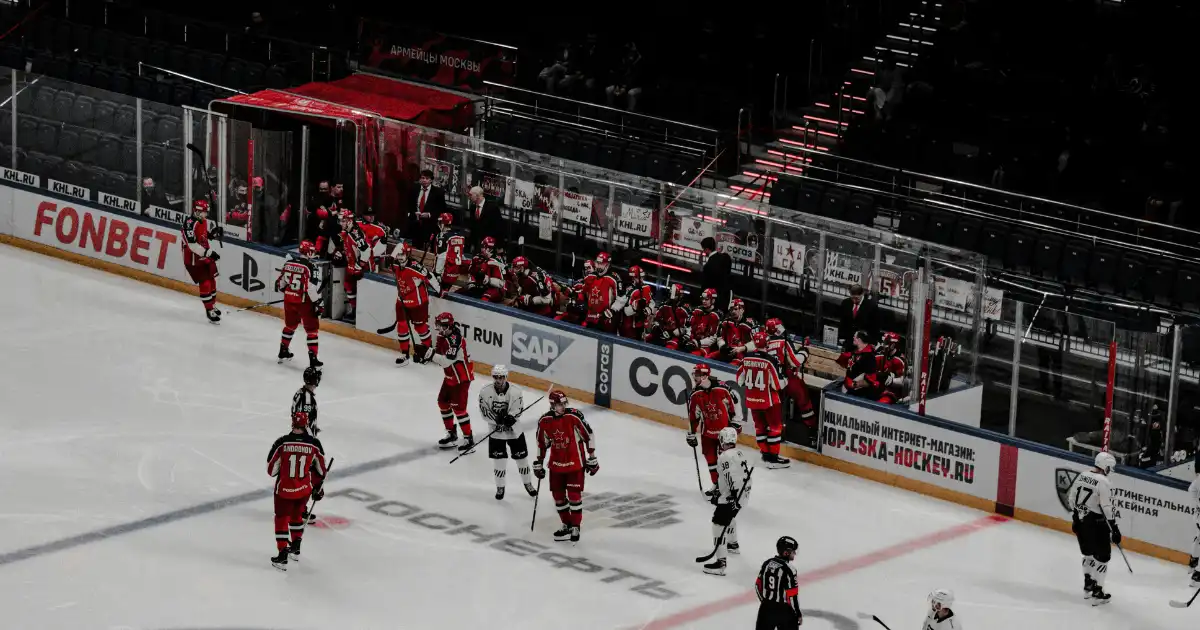A line change in hockey is one of the sport’s most dynamic and strategic elements. It refers to the substitution of players on the ice during live play or stoppages, ensuring fresh legs are constantly driving the action. Mastering the art of the line change is vital for teams to maintain pace, stamina, and tactical edge throughout the game.
In hockey, where intensity and speed dominate, endurance is constantly tested. Players rotate in shifts typically lasting 30 to 60 seconds. This system keeps players energized and responsive, and that’s where the line change becomes a central tactic.
How Does a Line Change Work?
A line change can occur in two ways: during a stoppage in play (a “whistle change”) or while play is ongoing (a “change on the fly”). Each scenario demands precision and timing to avoid penalties or lapses in coverage.
1. Stoppage Line Change
When the puck leaves play or an official blows the whistle, coaches swap out tired players. This allows for controlled changes with less risk, especially in defensive situations. Bench management during these moments is crucial—coaches often send on lines that match the opposing unit or exploit a matchup advantage.
2. Change on the Fly
This is where the line change becomes an art form. Players must jump on and off the ice seamlessly, avoiding too many men on the ice penalties. Teams typically change in “lines” or units: three forwards and two defensemen. The bench location and the puck’s position heavily influence the timing. Players furthest from the puck typically change first to maintain coverage.
Strategic Importance of Line Changes
A poorly timed line change can cost a team a goal—or worse, a game. On the flip side, a well-executed change keeps pressure on the opponent, sustains offensive zone time, and minimizes fatigue-based mistakes.
Matchups Matter
In professional leagues, especially the NHL, the last change is given to the home team after stoppages. This gives home coaches a tactical edge, allowing them to tailor each line change for favorable matchups—like putting a checking line against the opponent’s top scorers.
Tempo and Flow
Regular line changes keep the tempo high and ensure a team’s strategy remains sharp. Coaches rotate lines to keep skaters involved and ready. A team’s third and fourth lines may see less ice time, but strategic usage during a line change can wear down an opponent’s top units.
Penalties for Improper Line Changes
Improper line changes can lead to costly penalties that put a team at a disadvantage. One of the most common infractions is the “too many men on the ice” penalty. This occurs when a player entering the ice does so before the player they’re replacing is within five feet of the bench—or if both are on the ice and actively engaged in play.
Consequences:
• The offending team is assessed a bench minor penalty, resulting in two minutes of shorthanded play.
• This penalty can shift momentum and lead to goals against, especially against strong power play units.
• In tight games, such a lapse in concentration can have significant consequences on the outcome.
To avoid these penalties, players must be aware of substitution timing, communicate effectively with teammates, and ensure they don’t jump early or linger too long on the ice during a line change.
Common Line Combinations
Most teams organize forwards into four lines and defensemen into three pairings. Here’s a breakdown:
• First Line: Top scorers, most skilled players.
• Second Line: Secondary scoring threat.
• Third Line: Defensive specialists, energy players.
• Fourth Line: Physical play, checking, penalty killers.
Defense pairs are also rotated to ensure balance between offense and defense. Understanding these groupings helps fans appreciate how each line change contributes to the team’s overall game plan.
Coaching the Line Change
Behind every successful line change is a vigilant coaching staff. Coaches not only decide who plays next but monitor matchups, fatigue levels, and in-game momentum. Assistant coaches often handle the defense pairings, while the head coach focuses on forwards and the bigger picture.
Communication is key. Players on the bench must be ready to jump when called, and those on the ice must signal when they’re gassed. Clear calls like “I got next!” or hand taps on the boards keep everyone in sync.
The Science Behind It
Modern hockey increasingly uses analytics to optimize line changes. Wearable tech tracks time on ice, distance skated, and recovery rates. This data helps coaches make informed substitution choices in real time, refining each line change for maximum effectiveness.
Key Takeaways for Players and Fans
• A line change keeps players fresh and maintains a team’s pace.
• Poor changes can lead to turnovers or odd-man rushes.
• Players need awareness, timing, and communication.
• Coaches use changes to control matchups and tempo.
• Line combinations reflect roles and strategies, not just skill level.
• Improper line changes can result in penalties that shift game momentum.
Final Thoughts
In hockey, a well-timed line change can be the difference between victory and defeat. It’s a core element of team strategy, blending physical stamina with tactical decision-making. Next time you’re watching a game, pay close attention to the bench—you’ll see a chess match of substitutions playing out in real time.

